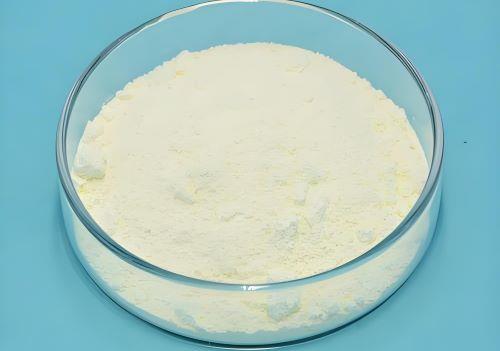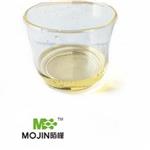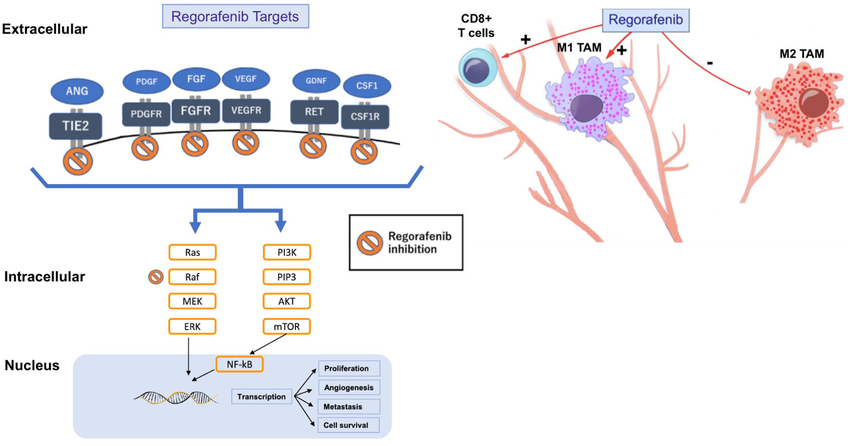1,3,5-Benzenetricarboxylic acid chloride: Preparation and its application research
Jul 28,2025
Introduction
1,3,5-Benzenetricarboxylic acid chloride (also known as trimesoyl trichloride;Figure 1) is a common monomer in the preparation of polyamide reverse osmosis membrane and nanofiltration membrane, which has a good application prospect in the rapid development of membrane industry today.

Preparation of 1,3,5-Benzenetricarboxylic acid chloride
1,3,5-Benzenetricarboxylic acid chloride was prepared from trimesic acid (TMA) using triphosgene at room temperature. The best result was that trimesic acid reacted with triphosgene at room temperature in the presence of imidazole/DMF using tetrahydrofuran as solvent to give TMC in 88% yield. Purity of the product was more than 99.2% ,and its melting point was 32.5~33.6. Effects of catalyst and solvent on the reaction were discussed. In the presence of single catalyst, such as dimethylformamide (DMF), pyridine, imidazole and triethylamine, the yields were all below 32%, while in the presence of binary catalyst, such as pyridine/DMF and imidazole/DMF, the yields were higer than 60% . Speed of the reaction depended on the solvent to some extent because it is good for the heterogeneous reaction mixture to dissolve the product (1,3,5-Benzenetricarboxylic acid chloride) into the solvent quickly; it spent less time to become homogeneous if the solubility parameter of solvent was close to that of 1,3,5-benzenetricarboxylic acid chloride. The mole ratio n(BTC)/n(TMA) was an important factor in the reaction. The yield was nearly zero if n(BTC)/n(TMA)<1.2 and increased with the increase of the mole ratio until n(BTC )/n(TMA)>3.
Applied in nanocomposite
In the recent years, forward osmosis (FO) technology receives lots of attention for water treatment, including heavy metal ion removal, since its low polluted tendency, reduced energy cost and environmental friendly. FO membrane currently mainly studied is thin film composite (TFC) membrane, which is prepared by forming a densem-Phenylenediamine/1,3,5-benzenetricarboxylic acid chloride (MPD/TMC) cross-linked layer on a substrate. Although the dense selective layer endows the membrane with an excellent solute rejection,the cross-linked networks limits the penetration of water molecule, thus reduces the separation efficiency. Hence, FO membranes with nanofiltration-like selective layer have been developed in some application areas, such as treating wastewater containing heavy metal ions and organic contaminant. However, there is needing further exploration before the process is effective by these membranes.
A novel thin film nanocomposite (TFN) forward osmosis (FO) membrane with a positively charged and nanofunctional selective layer has been developed for effective heavy metal ions removal. The selective layer is constructed by penetrating the polydopamine modified zeolitic imidazolate framework (ZIF-8@PDA) in the poly(ethyleneimine)/1,3,5-benzenetricarboxylic acid chloride (PEI/TMC) crosslinked matrix. Compared with the pristine thin film composite (TFC) membrane, the thin film nanocomposite membrane (0.05 wt % nanofillers loading) exhibits a higher water flux (20.8 vs12.8 LMH) without losing of selectivity in terms of Js/Jw ratio (0.25vs0.20 g/L) in FO mode. This improvement of the permeability is mainly attributed to the optimized selective layer with good wettability and loose structure. Besides, the modified PDA layer facilitates the affinity between the nanofillers and selective layer, which results in an ideal selectivity. In addition, this modified membrane shows a high heavy metal ion (Cu2+, and Ni2+ and Pb2+) rejection (>96%) in FO mode. Our finding offers a simple and efficient method to enhance the FO performance of membrane by designing the selective layer for treating heavy metal wastewater.[2]
Applied in Adsorbents
The first examples of monolithic crystalline host–guest hybrid materials are described. The reaction of 1,3,5-benzenetricarboxylic acid (H3BTC) and Fe(NO3)3·9H2O in the presence of decamethylcucurbit 5 uril ammonium chloride(MC5·2NH4Cl·4H2O) directly affords MC5@MIL-100(Fe) hybrid monoliths featuring hierarchical micro-, meso- and macropores. Particularly, this “bottle-around-ship” synthesis and one-pot shaping are facilitated by a newly discovered Fe-MC5 flowing gel formed by mechanochemistry. The designed MC5@MIL-100(Fe) hybrid material with MC5 as active domains shows enhanced CH4 and lead(II) uptake performance, and selective capture of lead(II) cations at low concentrations. This shows that host–guest hybrid materials can exhibit synergic properties that out-perform materials based on individual components.[3]
References
[1] Zhou Y, et al..Preparation of Trimesoyl Chloride from Trimesoyl Acid Using Triphosgene[J].Fine chemicals,2005,(08):628-630.
[2] Qiu M, He C. Efficient removal of heavy metal ions by forward osmosis membrane with a polydopamine modified zeolitic imidazolate framework incorporated selective layer. J Hazard Mater. 2019;367:339-347. doi:10.1016/j.jhazmat.2018.12.096
[3] Liang J, Gvilava V, Jansen C, et al. Cucurbituril-Encapsulating Metal-Organic Framework via Mechanochemistry: Adsorbents with Enhanced Performance. Angew Chem Int Ed Engl. 2021;60(28):15365-15370. doi:10.1002/anie.202100675
- Related articles
- Related Qustion
Regorafenib is an effective, orally active TKI with a mechanism of action that enables it to exhibit broad activity in various cancers.....
Jul 28,2025API1,3,5-Benzenetricarboxylic acid chloride
4422-95-1You may like
1,3,5-Benzenetricarboxylic acid chloride manufacturers
- 1,3,5-Benzenetricarboxylic acid chloride
-

- $0.00 / 25KG
- 2025-07-07
- CAS:4422-95-1
- Min. Order: 1KG
- Purity: 99%
- Supply Ability: 50000KG/month
- 1,3,5-Benzenetricarboxylic acid chloride
-

- $50.00 / 1KG
- 2025-07-07
- CAS:4422-95-1
- Min. Order: 1KG
- Purity: 99%
- Supply Ability: 5000KG
- 1,3,5-Benzenetricarboxylic acid chloride
-

- $0.00 / 1KG
- 2025-06-27
- CAS:4422-95-1
- Min. Order: 50KG
- Purity: 99%
- Supply Ability: 500000kg





